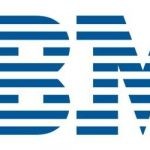Quantum Company Alice & Bob Announce New Advances in Cat Qubits

In a collaboration with academic partners at Laboratoire de Physique de l’ENS, Mines Paris, and Laboratoire de Physique de l’ENS de Lyon, quantum computing company Alice & Bob recently announced new advances in the design of their superconducting cat qubits. Their new advances include better performance, which includes a larger stabilization rate than previous systems, better error suppression, and enhanced scalability.
The Importance of Cat Qubits
A cat qubit, also known as Schrödinger’s cat qubit, is a type of quantum bit that is used in quantum computing. It represents a quantum system that exists in a coherent superposition of two macroscopically distinguishable states, such as a superposition of two distinct energy levels or current states. The two states are typically called “0” and “1” in the context of quantum computing. The importance of cat qubits lies in their potential advantages over traditional qubits, typically based on individual atoms or subatomic particles. Cat qubits are more robust against certain types of errors and noise, making them potentially more reliable and resistant to decoherence, which is the loss of quantum information due to interactions with the environment.
New Findings
Alice & Bob and their collaborators showed some interesting results in two new preprints. According to the press release, in their first preprint:
“a new way to access the cat qubit information is introduced called TIGRO. This approach enables the removal of the “transmon,” a key structure in most other superconducting processors previously used for readout. TIGRO also reduces the bit-flip errors by four orders of magnitude compared to the state-of-the-art and decreases the qubit footprint by 50%. It also reduces the number of IO ports from 4 to 3 while maintaining quantum control over the qubit.
In their other preprint, the researchers developed a system called AutoCat, which is a cat-qubit stabilization mechanism that improved the stabilization strength of the qubits by a factor of ten compared to the previous research. This system can help enhance the cat qubits’ error mitigation and gate control. “The steps we announced today are possible because cat qubits are still a relatively young design. They are far from hitting their ceiling. If you are creative and have a good process for trying out new ideas, there’s still plenty of room for improvement — another reason why it’s exciting to work with cat qubits.” says Sébastien Jézouin, Chief Experimentalist, in an interview with Inside Quantum Technology.
Others in Alice & Bob are also excited by these findings. “These new designs can further enhance cat qubit performance beyond its already record-breaking error resistance,” said Théau Peronnin, CEO and co-founder of Alice & Bob, in the press release. “This research demonstrates our focus on design creativity as a key ingredient in building a fault-tolerant quantum computer based on superconducting circuits.”
Both the TIGRO and AutoCat systems are still in their prototype phase, needing to pass further testing before being seriously implemented. According to the press release: “The new readout approach, TIGRO, needs to improve to reach the fidelity of previous schemes. In the AutoCat chip, the presence of a transmon still limits the attainable bit-flip lifetime to 300ms. Researchers are confident they can resolve both issues.”
“I had never realized herding cats could ever become a real job description,” said Blaise Vignon, Chief Product Officer of Alice & Bob, in the press release. “I am very proud of the framework we have built and what it enables the company to accomplish at an accelerated pace.”
Kenna Hughes-Castleberry is a staff writer at Inside Quantum Technology and the Science Communicator at JILA (a partnership between the University of Colorado Boulder and NIST). Her writing beats include deep tech, quantum computing, and AI. Her work has been featured in Scientific American, Discover Magazine, Ars Technica, and more.





















